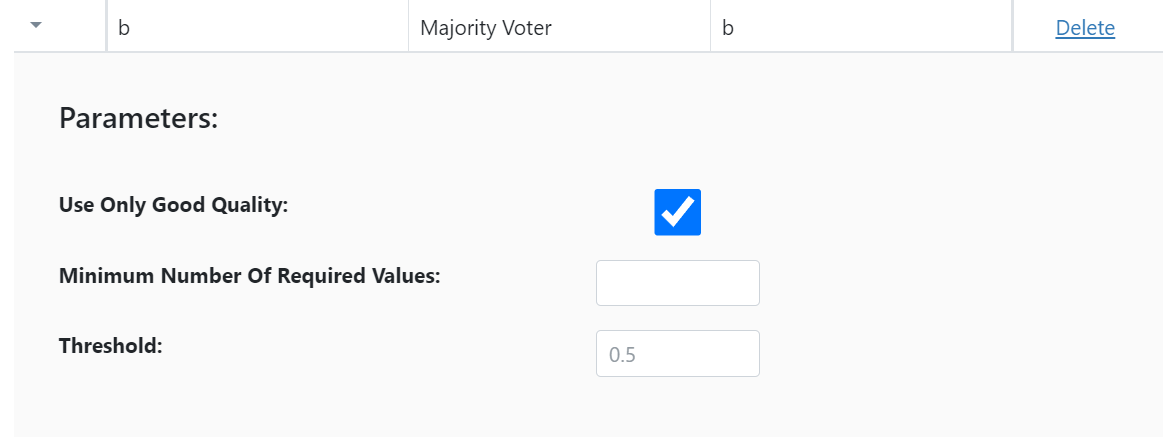Majority Voter
The aggregate forms a value representing the majority of all Boolean values of the input signal, and generates an output signal consisting of a data point which has a timestamp corresponding to the end of the data group.
For the majority function see Wikipedia
Configuration

- Signal Name
The name of the signal at the ‘in’ port.
- Operation
To use majority voter aggregate, the operation must be
majorityVoter.- Parameters
- Use Only Good Quality
Only the datapoints with good Quality are used for calculation.
Default: enabled
- Minimum Number Of Required Values
If set the calculation requires a minimum number of values for a good quality.
Default: unset
- Threshold
Defines the voting threshold.
Default: 0.5
- Output Signal Name
The name of the signal on the ‘out’ port. If empty, the Signal Name is the Output Signal Name.
Example 1:
The received data group has a granularity of 1h (e.g. 01:00-02:00) containing data points with a granularity of 10m. The operation threshold is 0.5
Input:
Timestamp |
Values |
|---|---|
01:10 |
1 |
01:20 |
1 |
01:30 |
0 |
01:40 |
0 |
01:50 |
1 |
02:00 |
1 |
Output:
Timestamp |
Values |
|---|---|
02:00 |
1 |
Example 2:
The received data group has a granularity of 1h (e.g. 01:00-02:00) containing data points with a granularity of 10m. The operation threshold is 0.5
Input:
Timestamp |
Values |
|---|---|
01:10 |
1 |
01:20 |
0 |
01:30 |
0 |
01:40 |
0 |
01:50 |
0 |
02:00 |
1 |
Output:
Timestamp |
Values |
|---|---|
02:00 |
0 |